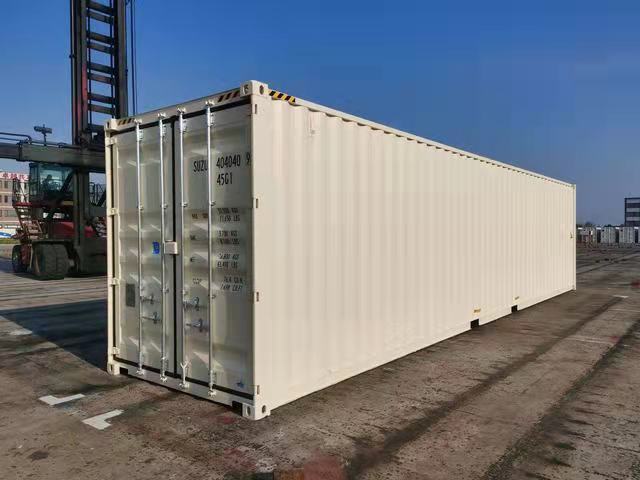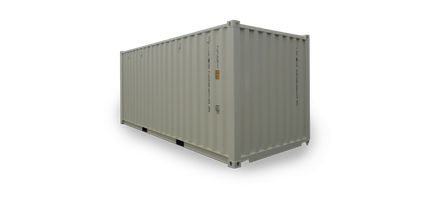The Ultimate Overview to Picking the Right Shipping Container for Your Requirements
When it concerns picking the ideal delivery container, comprehending your particular requirements is necessary. You'll want to take into consideration aspects like size, kind, and product to ensure you make the very best selection. From common dimensions to specialized alternatives, there's a great deal to explore. And also, budgeting for both the container and any kind of alterations can make a large difference. Allow's damage down the vital facets to help you find the ideal fit for your requirements.
Understanding Delivery Container Sizes
When you're choosing a shipping container, comprehending the various sizes offered is critical for making the appropriate choice. Delivering containers normally come in conventional lengths of 20 and 40 feet, but you'll also find various other measurements. Understanding the dimension you require depends on what you plan to shop or transport.If you're moving smaller products, a 20-foot container may be perfect, while bigger shipments commonly call for a 40-foot container. Keep in mind that the elevation can likewise vary; high cube containers offer added vertical room, which can be advantageous for taller goods - Shop New Shipping Container 40' x 8' x 9’6".Before choosing, determine your cargo, and consider exactly how much area you'll require for loading and dumping. Always factor in potential future demands-- deciding for a slightly larger container might save you hassle down the line. Ultimately, choosing the appropriate size will certainly enhance performance and assure your products are safe during transit
Kinds Of Shipping Containers Available
There are a number of types of delivery containers available, each created for certain purposes and freight needs. The typical completely dry container is versatile, perfect for basic cargo. If you're delivering subject to spoiling goods, take into consideration a cooled container, which preserves a controlled temperature level. For oversized products, high cube containers provide added height, accommodating taller loads.If you require to transport hefty equipment or tools, level rack containers provide a tough base without walls. Open-top containers enable for easy loading of tall freight, with a removable tarp covering for protection. If you're trying to find versatility, take into consideration a collapsible container that can be easily kept when not in use.Lastly, specialized containers like tank containers are used for fluids, while vented containers are made for bulk freight that needs air flow. Knowing your freight kind will certainly help you select the appropriate container to fulfill your shipping needs effectively.
Material Factors To Consider for Toughness
When picking a shipping container, the product plays an essential function in its durability. You'll want to consider the benefits of steel versus light weight aluminum, specifically relating to deterioration resistance. Recognizing these variables can aid you make an extra educated selection for your delivery needs.
Steel vs. Light weight aluminum Containers
Exactly how do you pick in between steel and light weight aluminum containers for your delivery needs? Begin by considering longevity. Steel containers are robust and offer exceptional strength, making them optimal for hefty loads and rough problems. They stand up to damages from impacts and are usually less costly, which can be a significant aspect for budget-conscious buyers.On the various other hand, light weight aluminum containers are light-weight, which can conserve you on shipping expenses. They're easier to navigate and are a terrific choice if you need to transport goods often. However, aluminum is generally a lot more expensive and less durable than steel. Consider your certain requirements meticulously, including weight, expense, and the sort of cargo you'll be shipping, to make the appropriate option for your circumstance.
Corrosion Resistance Factors
Selecting the best product does not just involve weight and price; deterioration resistance plays a significant function in resilience. When picking a delivery container, consider the atmosphere it'll encounter. Steel containers, while strong, can rust otherwise properly dealt with. Try to find choices with protective finishes have a peek at these guys or galvanization to boost their life expectancy. Aluminum, on the other hand, uses all-natural corrosion resistance, making it suitable for coastal areas or moist conditions. It can be a lot more costly. In addition, examine the container's use-- if it'll be exposed to chemicals or severe climate, prioritize materials that can stand up to these conditions. Buying a corrosion-resistant container currently can save you from expensive repair work or replacements down the line. Choose sensibly for lasting advantages.
Alterations and Personalization Options
Delivering containers aren't just for transferring items; they can be changed to meet your certain needs via different modifications and customization options. You can transform a conventional container into a cozy office room, a short-lived retail store, or perhaps an individual gym. The opportunities are almost endless.Think about including home windows, insulation, or ventilation to improve comfort. You could additionally consider electric wiring, pipes, or even custom shelving to enhance capability. If security's a worry, enhanced locks can give peace of mind.For visual charm, you can repaint the container or include a special layout to make it stick out. Do not ignore floor covering choices-- whether you desire durable plywood or something a lot more innovative, it can boost the space.Ultimately, tailoring your delivery container to match your demands can improve functionality and produce a distinct setting that shows your style.
Examining Your Transport Needs
When it concerns using your modified delivery container, comprehending your transport requires is essential. Begin by establishing what you'll be shipping-- whether it's heavy equipment, retail items, or personal products. Each type of cargo has various demands regarding size, weight, and accessibility.Next, think about the distance and mode of transport. Are you shipping in your area, country wide, or worldwide? This influences the container's style and functionality. If you're utilizing trucks, guarantee your container fits typical measurements for simple loading and unloading.Additionally, consider transit conditions. Will your items require unique security from climate or temperature level changes? If so, you may require insulation or air flow functions in your container.Lastly, analyze just how typically you'll be carrying products. Constant shipments may need a more durable and functional container to meet recurring demands. By dealing with these aspects, you'll be well-prepared to pick the right delivery container for your needs.
Budgeting for Your Delivery Container
Setting a budget for your delivery container is vital for making sure a why not try this out smooth purchasing procedure. Initially, determine just how much you can pay for to invest. Keep in mind that rates can differ substantially based upon dimension, problem, and type. New containers usually cost more, however used ones can supply considerable savings.Next, consider any added costs you could sustain, such as transport charges, distribution costs, and alterations. If you prepare to customize the container, consider those expenditures too. Research study different distributors to contrast rates and locate the most effective offer that satisfies your needs.Don' t fail to remember to consist of any type of licenses or policies that may relate to your acquisition and use of the container. By plainly describing your budget plan, you'll be better prepared to make enlightened decisions, guaranteeing you get the best container without breaking the bank.
Upkeep and Look After Longevity
To assure your delivery container lasts for several years, routine maintenance is vital. Start by checking the outside for corrosion, damages, and damages. If you detect any type of issues, address them immediately to avoid further wear and tear. Tidy the container periodically, both within and out, to remove dirt, debris, and dampness that can cause corrosion.Ensure the doors seal properly and lubricate the joints to avoid rust and sticking. If you're making use of the container for storage, consider including ventilation to minimize humidity and mold growth. For extra protection, use a rust-inhibiting paint or sealer annually.If your container's located in an extreme environment, like seaside areas, you could require to enhance maintenance frequency. Watch on the flooring, too; any type of signs of wear need to be repaired today. With these simple steps, you'll prolong the life of your delivery container substantially.
Regularly Asked Questions
How Do I Discover a Trusted Shipping Container Provider?
To find a trustworthy shipping container distributor, beginning by researching on the internet reviews, requesting recommendations from pals or industry calls, and comparing costs. Always check their qualifications and guarantee they provide top quality containers that satisfy your demands.

Can I Rent a Shipping Container Rather of Buying?
Yes, you can definitely rent out a shipping container check this instead of purchasing one. Many suppliers offer rental options, which can conserve you money and supply flexibility if you only require it for a brief duration.
What Allows Are Needed for Container Placement?

Are Shipping Containers Weatherproof and Appropriate for Outdoor Storage?
Yes, delivering containers are typically weatherproof, developed to withstand severe conditions. Their durable construction maintains your items safe and secure and completely dry, making them appropriate for outside storage space. Just ensure correct ventilation to protect against wetness build-up inside.
Just how Do I Carry a Delivery Container Once Acquired?
